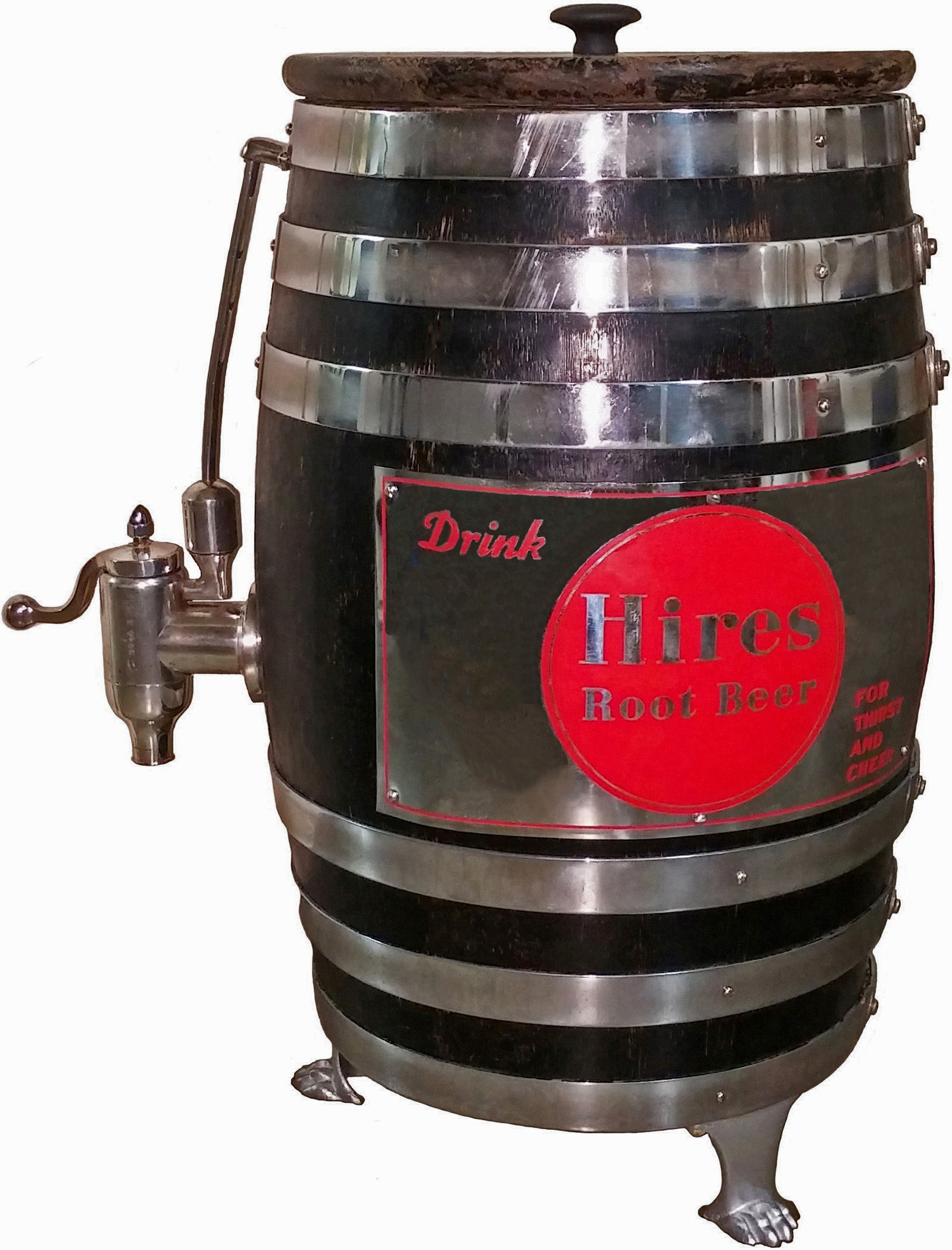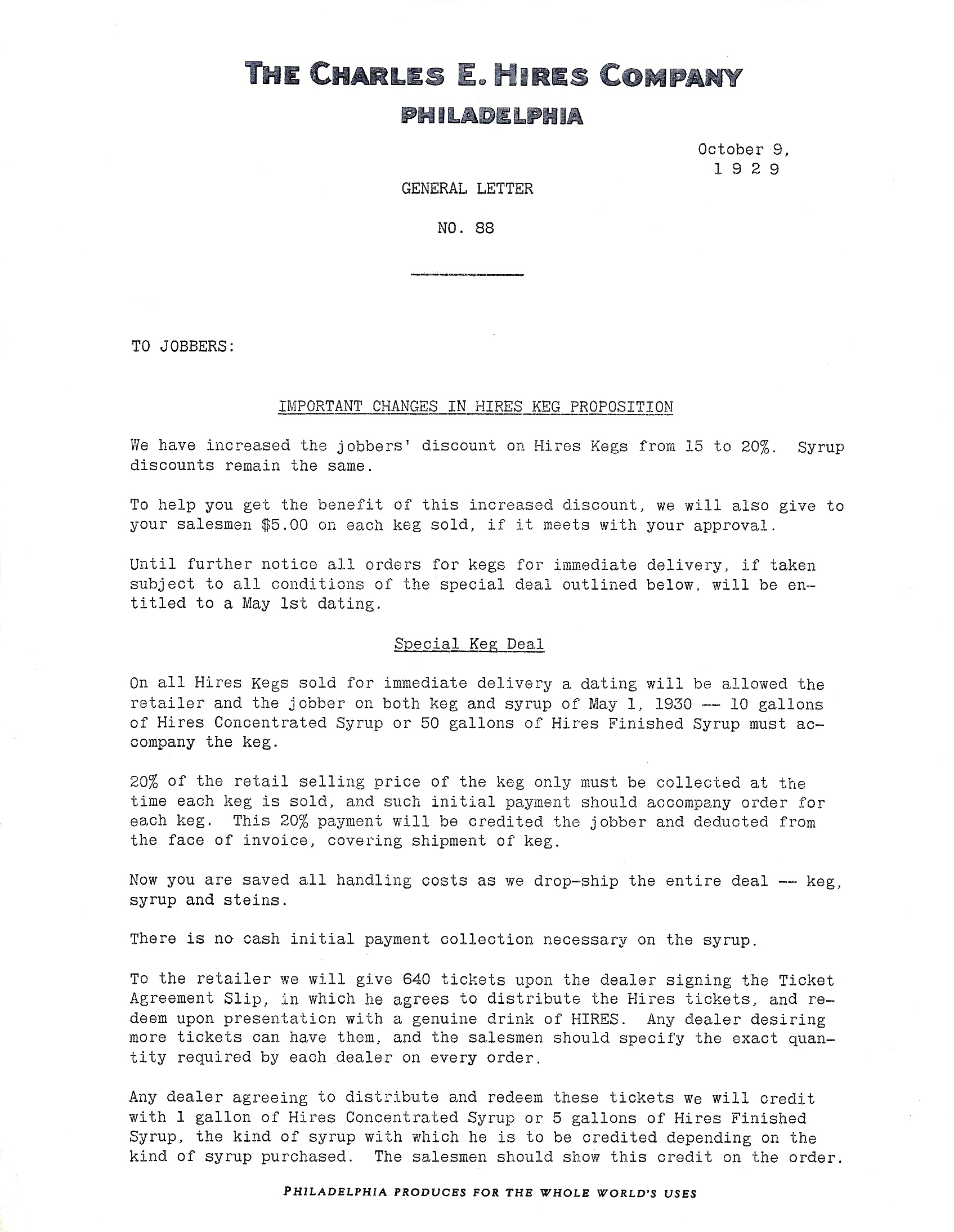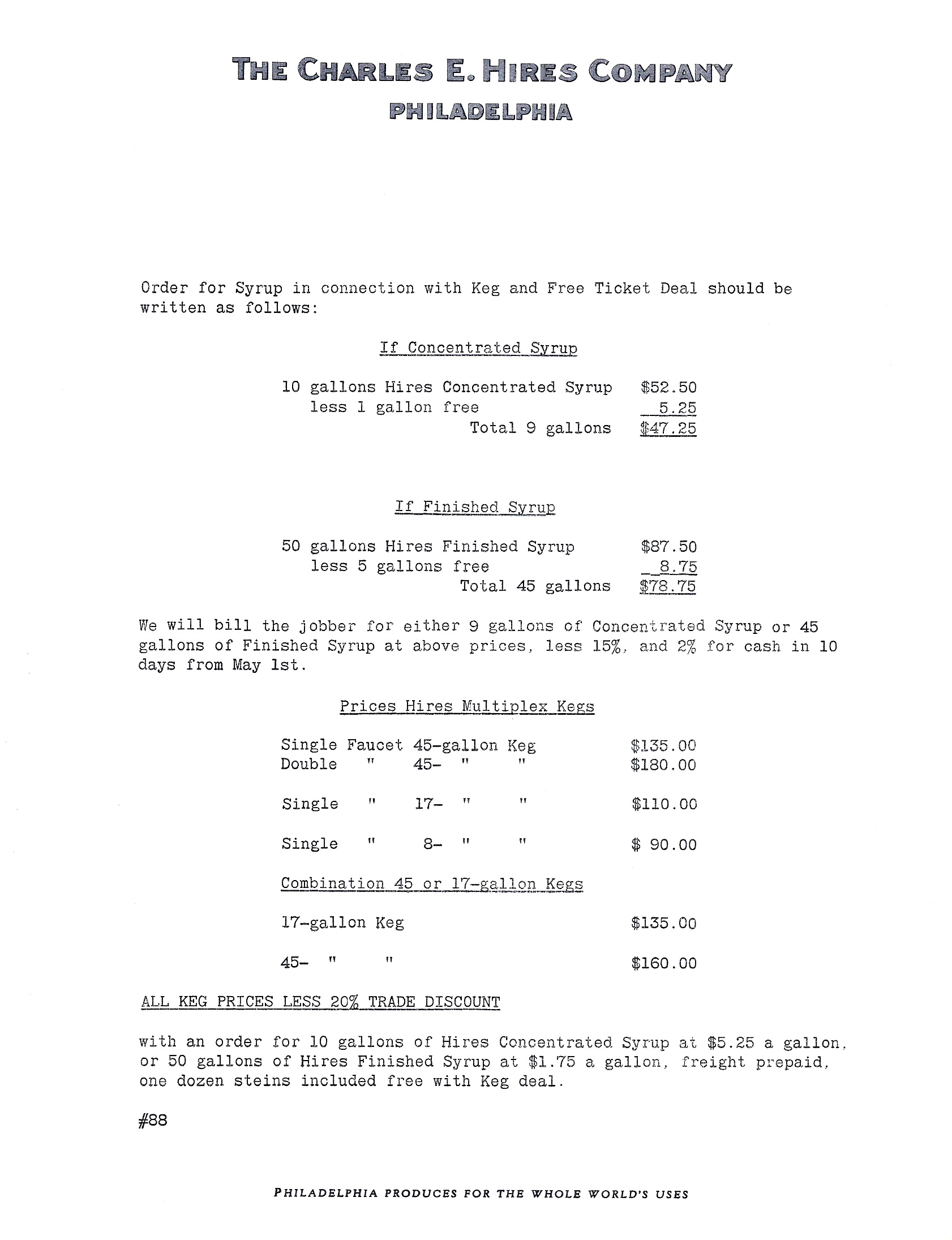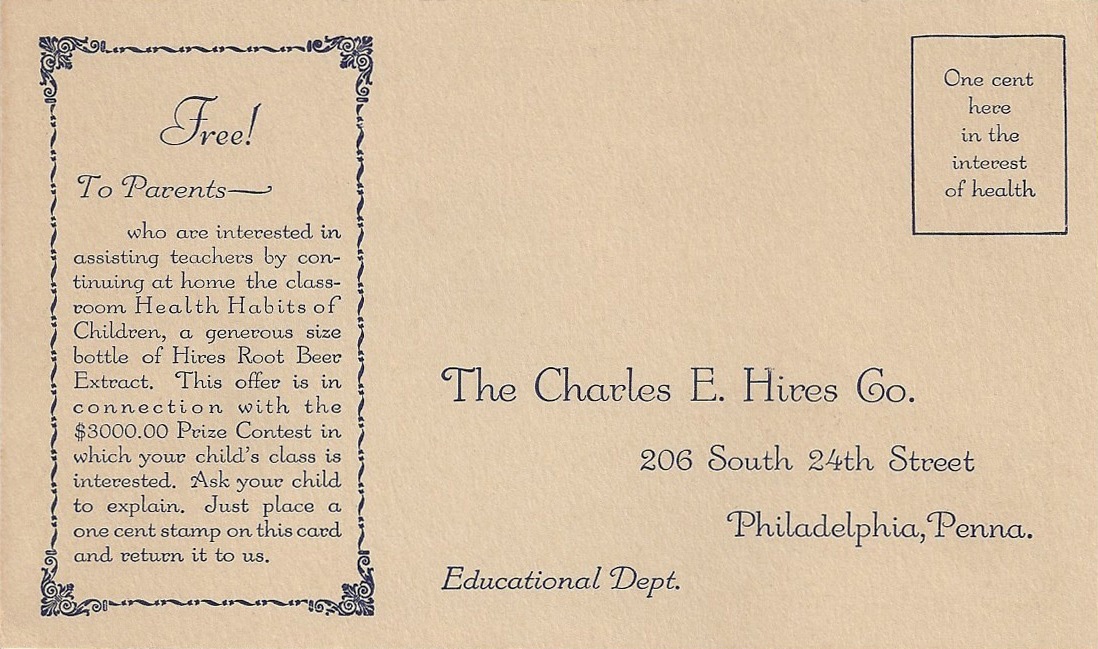1929
IT HAPPENED IN…1929
Fueled by wild speculation, stock prices hit
record highs and slowly declined until October 29th,
“Black Tuesday,” when huge blocks of stocks were dumped and the
Great Depression began.
Six million homes were built during 1924-1929 as
a response to a major housing shortage.
4.8 million new cars were produced during 1929.
A total of 26.5 million vehicles were registered.
60% of U.S. citizens had annual incomes of less
than $2,000, considered the bare minimum to supply a family with the
basic necessities of life.
Installment buying dominated for purchases of
large appliances, cars, and furnishings.
Newly introduced products and inventions included
sunglasses, tape recorders, car radios, and Ford’s station wagon.
C. L. Grigg introduced Bib-Label Lithiated
Lemon-Lime Soda (later renamed 7Up).
7,920 U.S. soft drink bottling plants were in
operation. Per capita
consumption was 53.1 bottles.
Those responding to advertisements for free samples received a cardboard mailing tube containing a 3/5 fluid ounce bottle of Hires Household Extract, enough extract to make eight pint bottles.
(Figure 1929-01, mailing tube for sample
Hires Extract)
(Figure 1929-02, sample Hires Ginger Beer
Extract carton, front panel)
(Figure 1929-02, sample Hires Ginger Beer
Extract carton, side panel)
Standard-sized Hires extract cartons were revised, labeled “Household
Formula,” and copyrighted in 1929.
Here are a Hires Root Beer Extract carton's side and end panels.
(Figure 1929-03, Hires Root
Beer Household Extract carton, side and end panels)
This eye-catching sign pictures 40 pint bottles of
Hires Root Beer, a Hires Root Beer Household Formula extract carton, a
full glass of root beer, a crown cap, and a cake of Fleischman’s Yeast.
(Figure 1929-04, paper sign,
10.0” x 14.0”)
The April 3, 1929 edition of The Evening News in Harrisburg, Pennsylvania carried a full page advertisement featuring and picturing Charles E. Hires Jr. offering a free glass of "the new Hires" to "everyone in Harrisburg." Here's the headline:
(Figure 1929-04.5, The Evening News, Harrisburg, PA, April 3, 1929, headline)
And here's the accompanying text:
Pleasure Plus Protection
Hires is more than a delicious beverage. It is more than a tonic drink. For 50 years the Hires formula of 16 plant juices from roots, herbs, barks and berries gave it a fine flavor and an invigorating effect. Now, a third quality is announced: it is nutritious. Hires now supplies needed Vitamin B and Calcium, lacking in the average diet, the cause of fatigue, nervousness, mal-nutrition, poor digestion, etc. Now the new Hires is a protective, corrective drink - but not a medicine. Nor does it contain any habit-forming drug. Drink 3 glasses of Hires daily and plenty of other fluid. Offset the deficiencies of the average meal of white bread, meat, potatoes and other over-cooked, de-vitaminized, de-mineralized foods. Hires brings you pleasure plus protection, all for 5¢. To protect yourself from imitations be sure to ask for "Hires." Don't ask for "Root Beer."
Now, after 50 years of serving the American people we announce a very important improvement in Hires.
Costly research has found a way to add Vitamin B and Calcium in Hires - two precious health needs in modern life.
So Hires - always appetizing and invigorating - now offers a third advantage: It's vitalizing.
It was my father's ambition, and it is the ambition of my brothers and myself, to give the people the finest beverage which can be created and to keep it modernized, as new researches reveal new ways.
May I ask you to try the new-day Hires, now offered in Harrisburg. I believe you will like it. I believe if you drink Hires regularly you'll not only find it most enjoyable, but you'll also feel better.
The accompanying coupon was headlined "GOOD FOR ONE 5¢ GLASS OF HIRES AT ANY SODA FOUNTAIN OR FROM ANY HIRES BARRELS."
The asterisk next to Harrisburg in the headline was explained in a footnote stating "Also people in nearby towns."
An otherwise identical advertisement was placed in the Daily News in New York City on June 30, 1929, offering free drinks "in New York and vicinity." No subsequent advertisements promoting "New Hires The Plus Beverage" have been found thus far.
(Figure 1929-04.5, The Evening News, Harrisburg, PA, April 3, 1929, new logo)
The following advertisement offered a free, full-sized bottle of Hires Household
Extract to those who added their name and address to the coupon and
presented it to a storekeeper handling Hires products.
Hires reimbursed storekeepers for participating in this promotion
that ended July 1, 1929.
(Figure 1929-05, newspaper
advertisement, 23.0” x 18.0”)
Hires and Fleischmann's shared advertising space on 2.0" x 3.5" paper yeast packets.
(Figure 1929-05.5,
Fleischmann's Yeast paper packet, front)
(Figure 1929-05.5,
Fleischmann's Yeast paper packet, back)
Touting their on-going partnership with General Motors Corporation's Frigidaire Division, Hires advertised their Iceless Cooler Service Division as "The largest and oldest iceless water service company in the world." This service was available only in the Philadelphia and New York City areas.
(Figure 1929-05.8,
Iceless Cooler Service Division advertisement)
During 1929 Hires introduced a new catch phrase: “For Thirst And Cheer.”
(Figure 1929-06, embossed tin sign, 10.0” x 27.5”)
Time, weather, and rough handling have taken their toll on this large, embossed, tin sign. The rectangular banner between the bottles provided a convenient place for a restaurant or store owner to add their business name.
(Figure 1929-06.5, embossed tin sign, 30.0” x 47.0”)
(Figure 1929-07, paper poster,
8.0” x 20.0”)
(Figure 1929-08, cardboard
sign, 24.0” x 28.0”, courtesy of the Wong collection)
A Woolworth’s soda fountain prominently displayed a 45 gallon Hires Multiplex Keg at the end of the counter. The rectangular sign on the front of the keg reads "Drink Hires Root Beer 5¢ For Thirst And Cheer."
(Figure 1929-09, Woolworth’s soda fountain)
Here's a close-up view of a Hires Multiplex Keg sign. It measures 17.0" x 10.0".
(Figure 1929-09.5, Hires Multiplex Keg sign)
The metal signage on the front of this wooden keg
dispenser reads “Drink Hires Root Beer For Thirst And Cheer.”
This sign was produced without the “5¢” marking.
(Figure 1929-10, wooden keg dispenser)
For the fiscal year ending September 30, 1929, Hires
reported sales of $4,083,726.
The company produced a $789,273 net profit, for a 19.33% profit
margin.
Hires sent General Letter No. 88 to their wholesalers October 9, 1929, a three page bulletin detailing a special promotion concerning keg distribution and free drink coupons. Note the pre-printed stationery footer declaring “PHILADELPHIA PRODUCES FOR THE WHOLE WORLD’S USES.”
(Figure 1929-11, General
Letter No. 88, 3 pages, October 9, 1929)
Continuing to market directly to school children,
Hires produced Normal Instructor
and Primary Plans bulletins.
“Hires Health Lesson No. 3” was one of a series of “Valuable
Teaching Aids.” This issue
featured a “Daily Drinking Chart” for tracking the daily consumption of
Black Cow, milk, Root Beer, and water, a free map offer, a free samples
coupon, and the announcement of a contest offering cash prizes to
teachers and pupils. This
publication is large and presented as two over-lapping images in order
to provide the full detail.
(Figure
1929-12, Normal
Instructor and Primary Plans bulletin, November
1929)
Teachers participating in the 1929 Hires contest gave
“A Message to Mother from the Teacher!” postcards to their students with
instructions to take the cards home to their parents.
No doubt Hires anticipated being flooded with contest entries
that would prove useful as testimonials for future advertising purposes.
Three ounce samples of Hires Household Extract were sent to those
mothers who returned the postcards.
(Figure 1929-13, contest
postcard, front)
(Figure 1929-13, contest
postcard, back)
In
late 1929 the American Bottlers of Carbonated Beverages (ABCB), the
national association of soft drink manufacturing and marketing
companies, launched a major advertising campaign promoting the soft
drink industry. “Your
Favorite Carbonated Beverage Is Best Bottled" was used initially, but
soon replaced with "Bottled Carbonated Beverages – Good and Good For
You,” a slogan frequently appearing in full page advertisements placed
in national magazines.
Concerned that some people weren’t familiar with the term “carbonated
beverages,” the ABCB produced and included this standardized description
in their advertisements:
BOTTLED CARBONATED BEVERAGES – These taste tempting
drinks are also known by less formal names – tonics in New England, soda
water in Dixie, soda pop in the Mid West, soft drinks in the Far West,
and we all know the ginger ales.
Call them what you will, but drink your fill – they’re good and
good for you.
The ABCB’s concern about the “carbonated beverages” term lasted until 1966 when they changed their own organization’s name to “National Soft Drink Association.”
In
addition to the extensive ABCB advertising campaign,
Organization in the Soft Drink
Industry – A History of the American Bottlers of Carbonated Beverages
noted:
About this time the 6-bottle carton, as a convenient
means of carrying bottled drinks from the grocery stores, was beginning
to catch on. The use of
such cartons – termed ‘Hom-Paks’ at the time – was promoted as a feature
of the national advertising effort.
In retrospect this contribution to the initial effort seems
insignificant in comparison to the proportions assumed by use of
carryout cartons in later years.
(It has been estimated that in 1928 approximately 2,000,000
six-bottle cartons were used by the carbonated beverage industry.
For the year 1941 the industry’s use of such cartons was
estimated at 125,000,000.)
But it no doubt helped to make the start toward that increased home use
of the industry’s products which is recognized as the principal reason
for the unprecedented growth in soft drink consumption during fifteen
years following.
J.
Edgar Hires filed a patent application May 8, 1922, but it was December
31, 1929 before the United States Patent Office issued Patent No.
1,742,074 for his “Bottle-Handling Device.”
The patent was in turn assigned to the Salem Glass Works of
Salem, New Jersey, most likely the primary glass manufacturer producing
the bottles used for packaging Hires Household Extract.
The highly-detailed patent filing includes 16 illustrations and
over six pages describing how the device functioned.
Here is an abbreviated description of the device’s functionality
and one illustration:
BOTTLE-HANDLING DEVICE
This invention relates to bottle handling devices,
particularly those used in a glass factory in connection with the
manufacturing of bottles by machines.
One of the objects of this invention is to provide a
device which will automatically do the work now done manually, in taking
the bottles from the forming machine and bringing them to a leer.
Another object is to provide a bottling handling
device which will pick up the bottles by the neck and carry them to
another point where it deposits them upon a form of conveyor which
carries them to the leer.
A further object is to provide, in a bottle handling
device, a plurality of gripping means, adapted to pick up the bottles
individually, particularly picking them up in succession, by the neck,
without knocking them over from their standing position and depositing
them in a standing position.
Another object is to provide in a bottle handling device, a conveyor, which shall carry the bottles overhead as they leave the bottle forming machine, so as to leave a clear passageway about the machine, affording greater freedom of movement to the operators.
Another object is to provide in a bottle handling
device, a conveyor formed to permit the free passage of a hanging bottle
gripping device through it, particularly with a bottle depending from
the gripping device…
Figure 11 “is a diagrammatical side elevation of the
receiving end of the device, showing the effect of the cams upon the
course taken by the parts of one of the griping units, when picking up a
bottle by the neck.”
(Figure 1929-14, J. Edgar Hires U.S. Patent
No. 1,724,074, Figure 11)
Full details for this and several other J. Edgar Hires patents are available on-line.
The neck label affixed to this clear, 24 ounce crown top bottle instructed users to "SERVE COLD" and advertised Hires Root Beer was "APPETIZING - HEALTHFUL." The line beneath Root Beer on the body label reads "DELICIOUS - HEALTHFUL."
(Figure 1929-15, paper-labeled 24 ounce crown
top bottle)




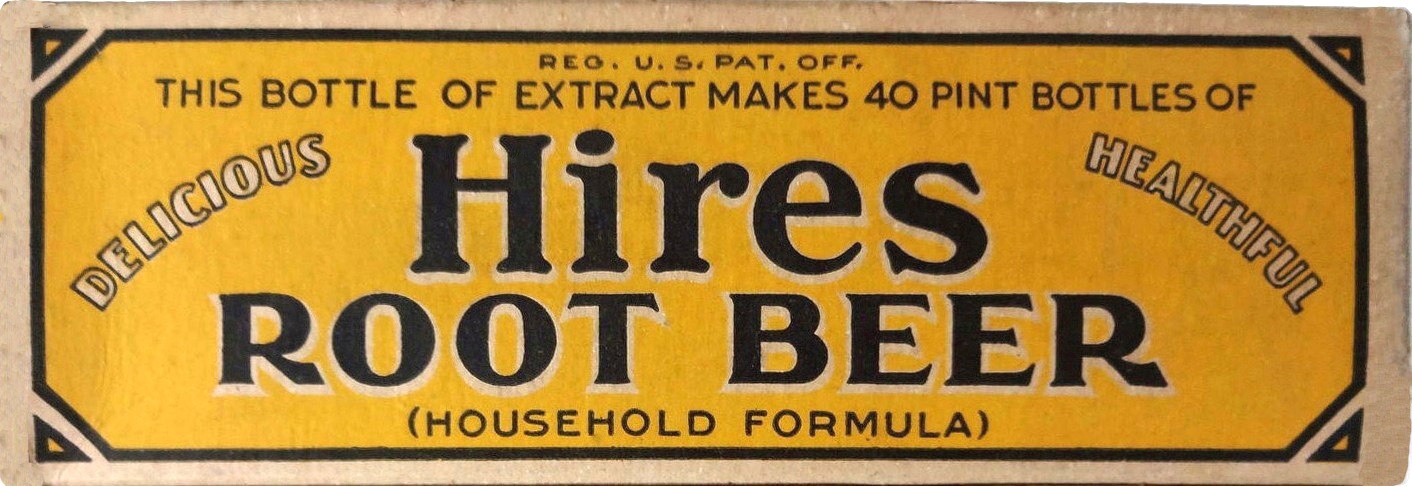
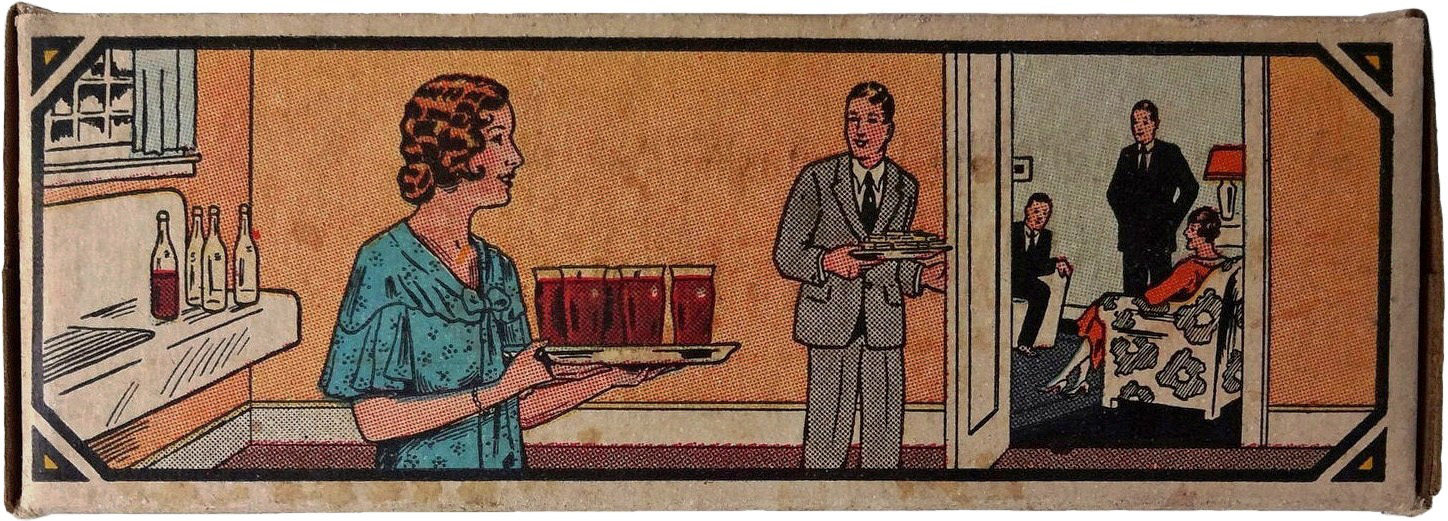
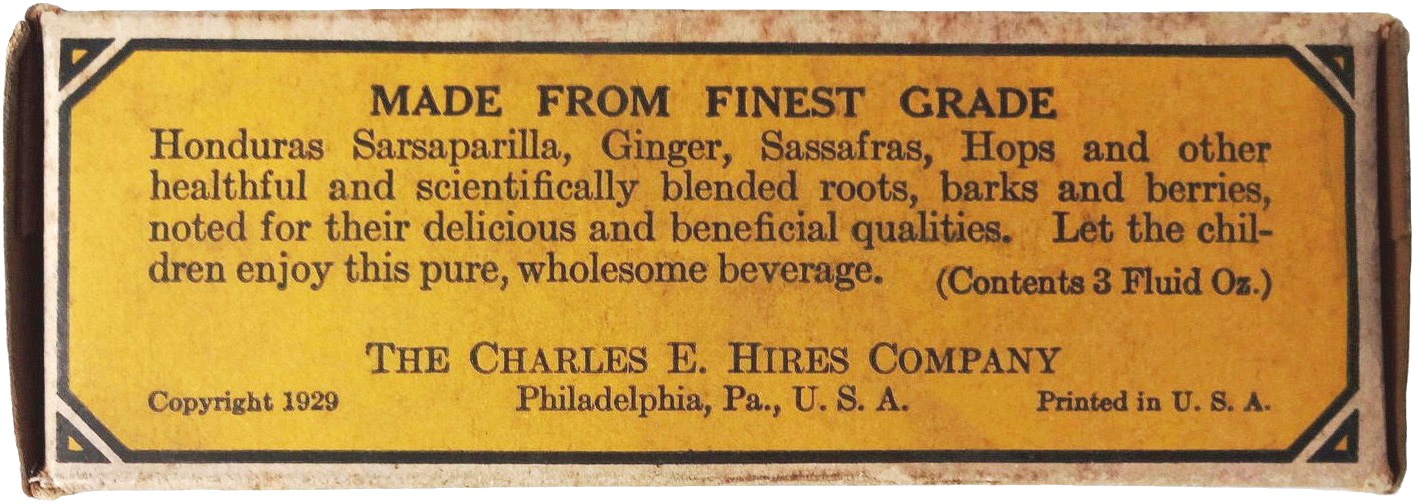
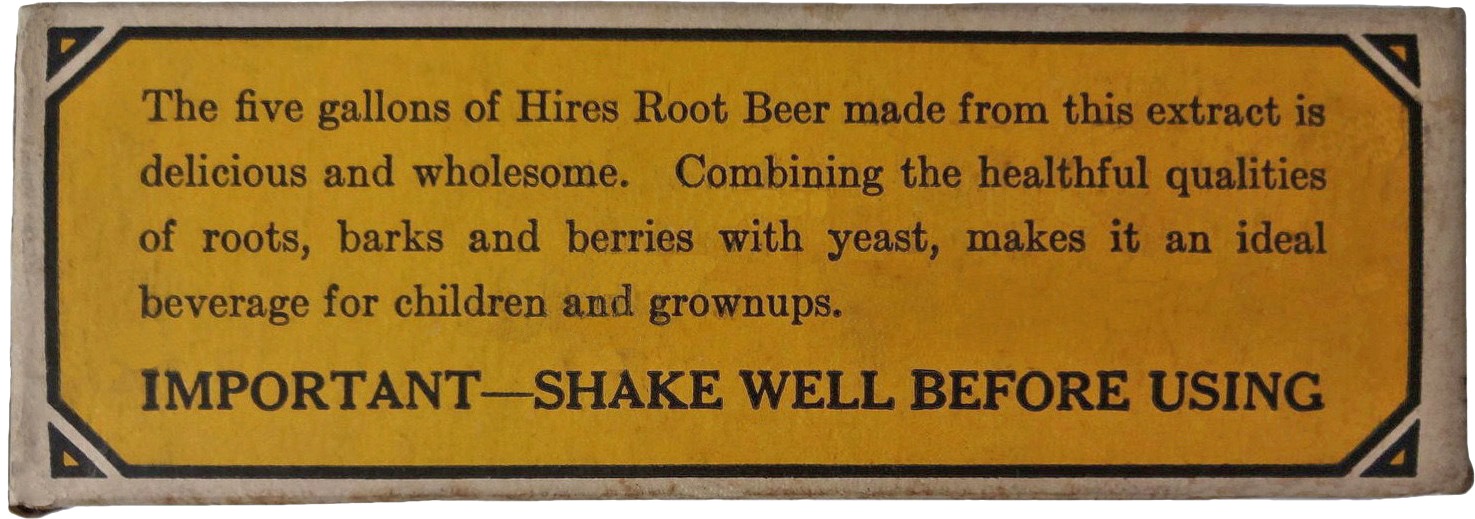
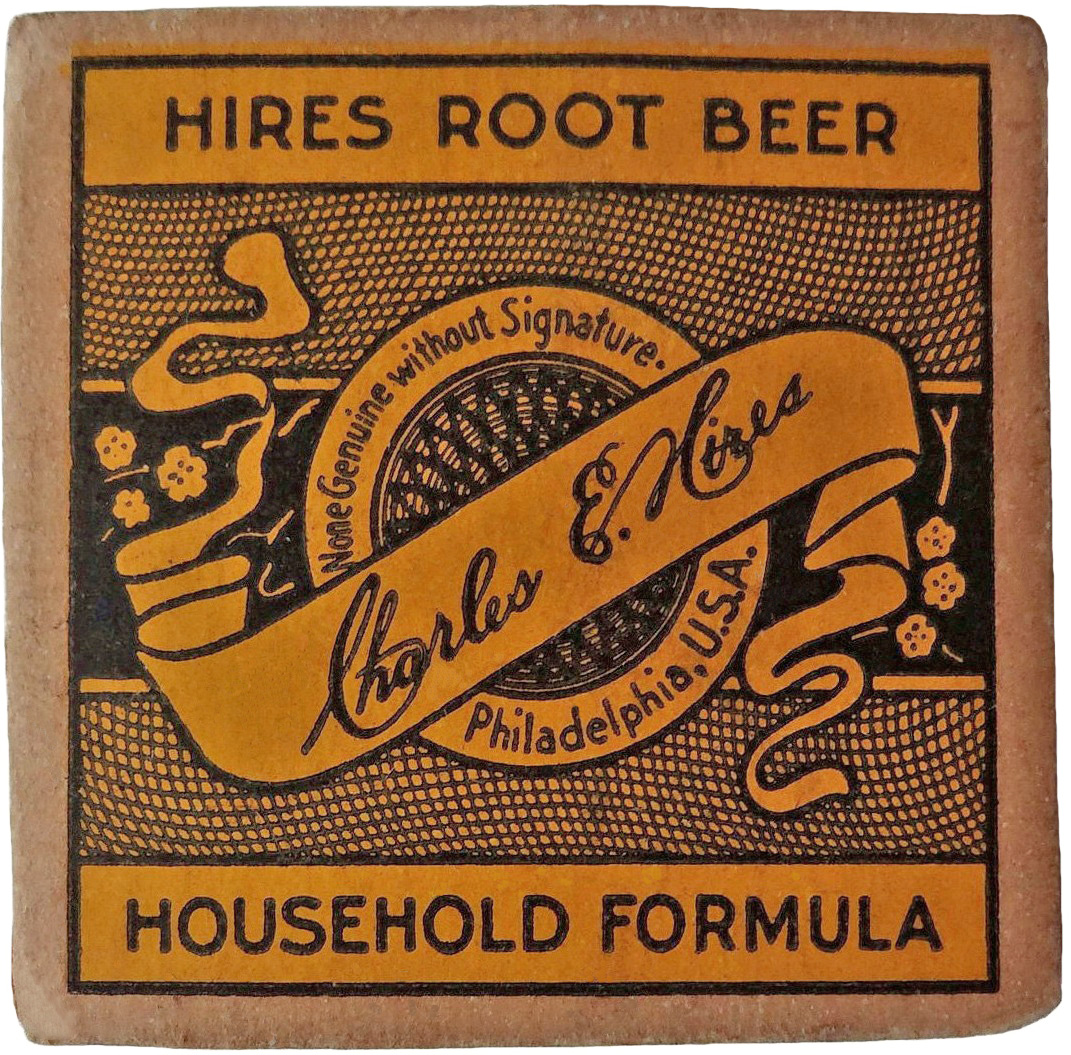
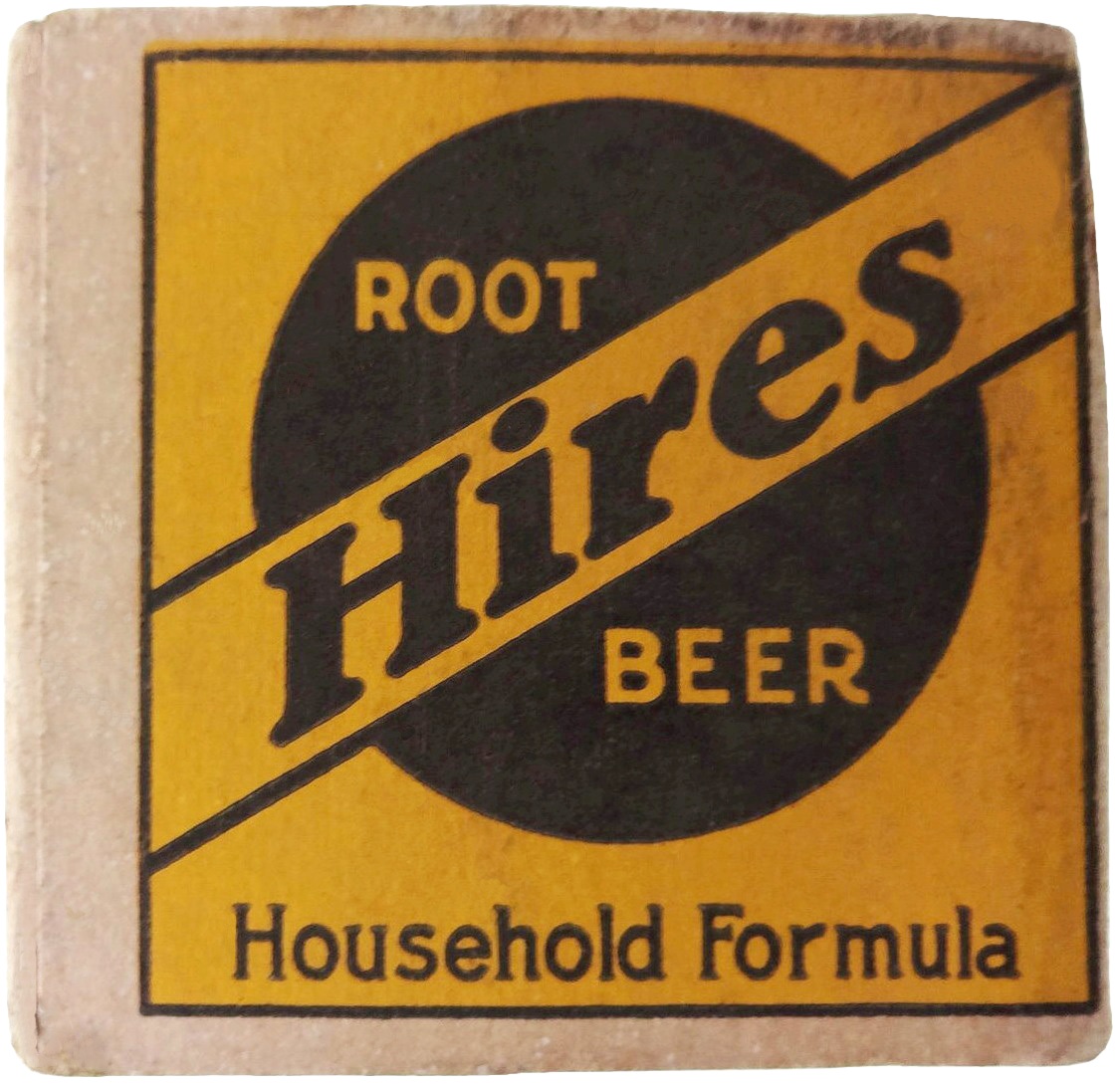

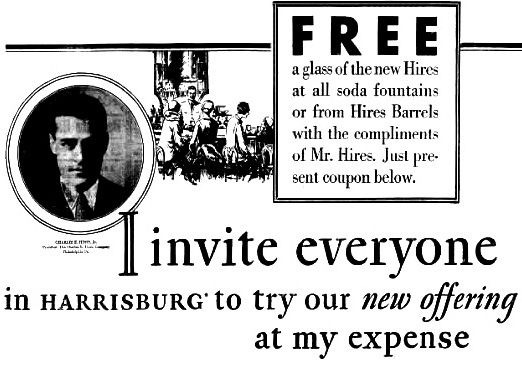
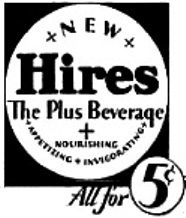
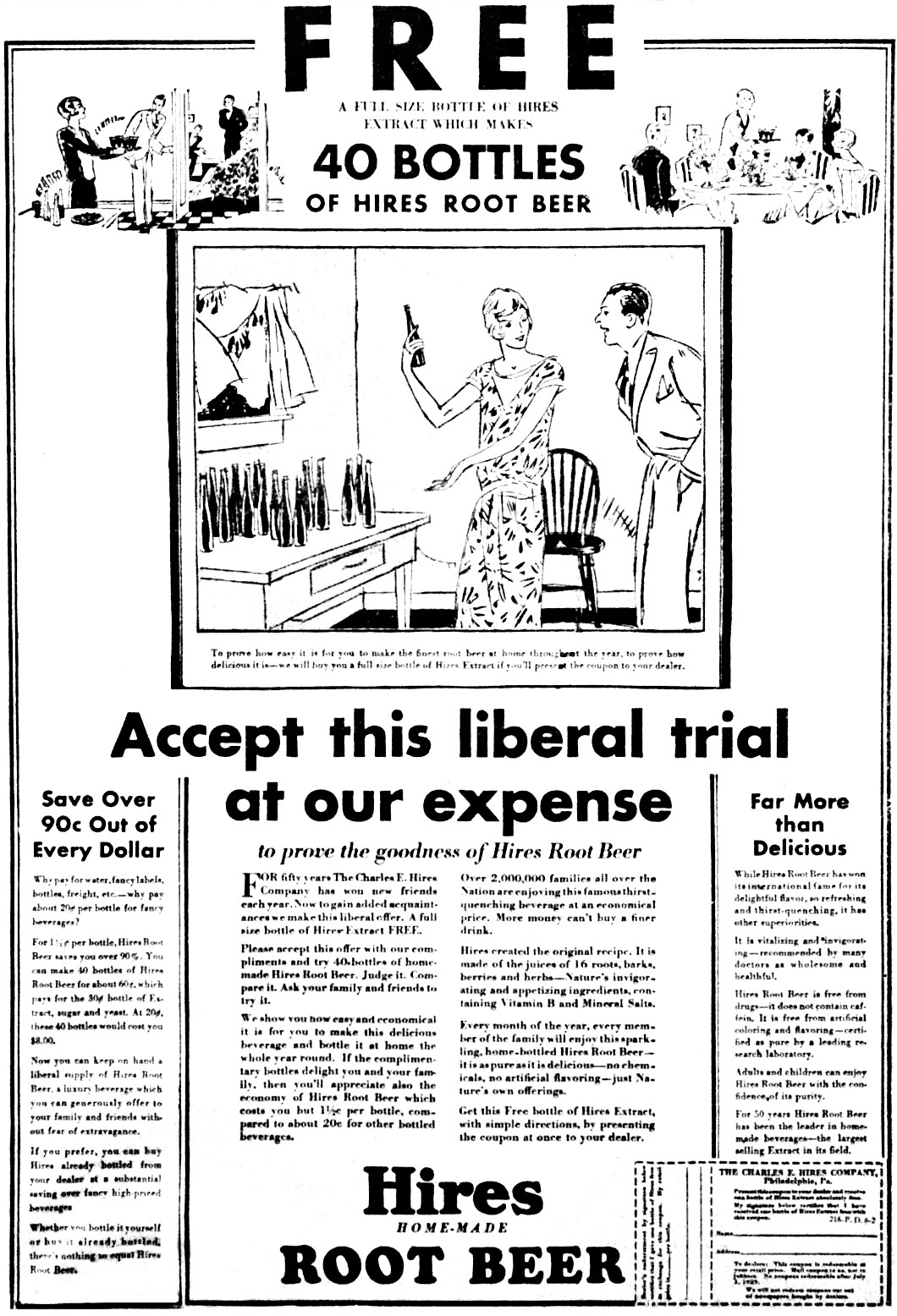

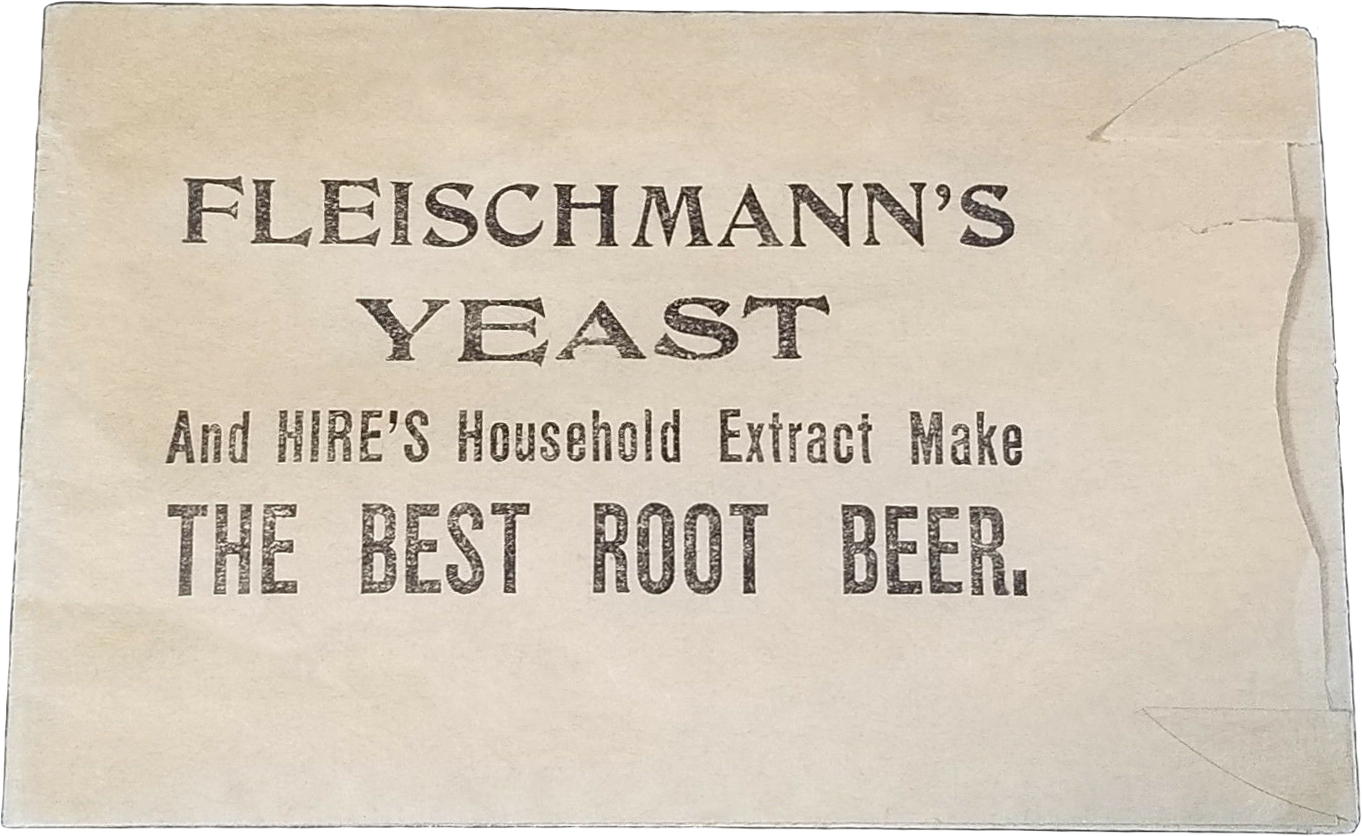
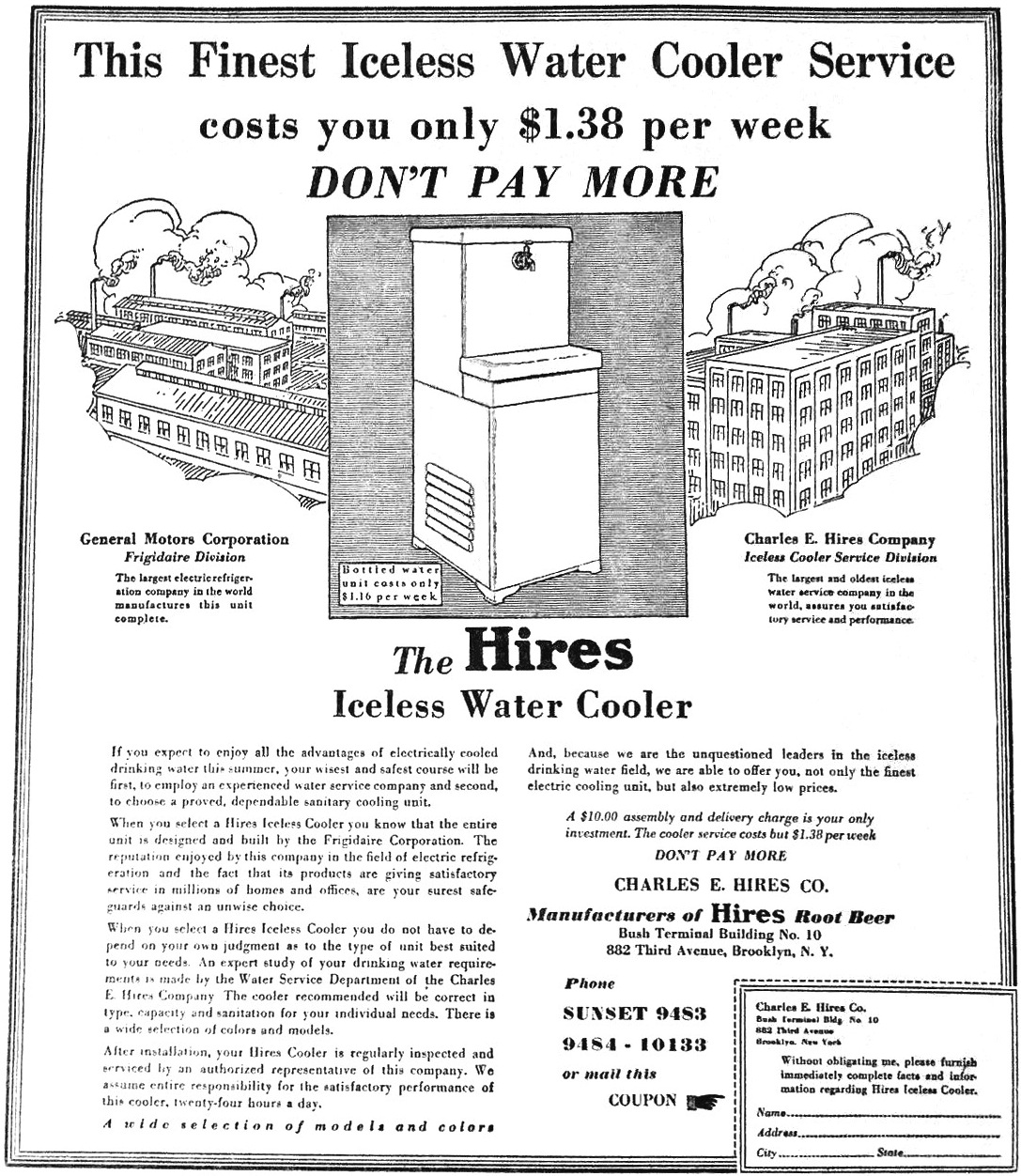
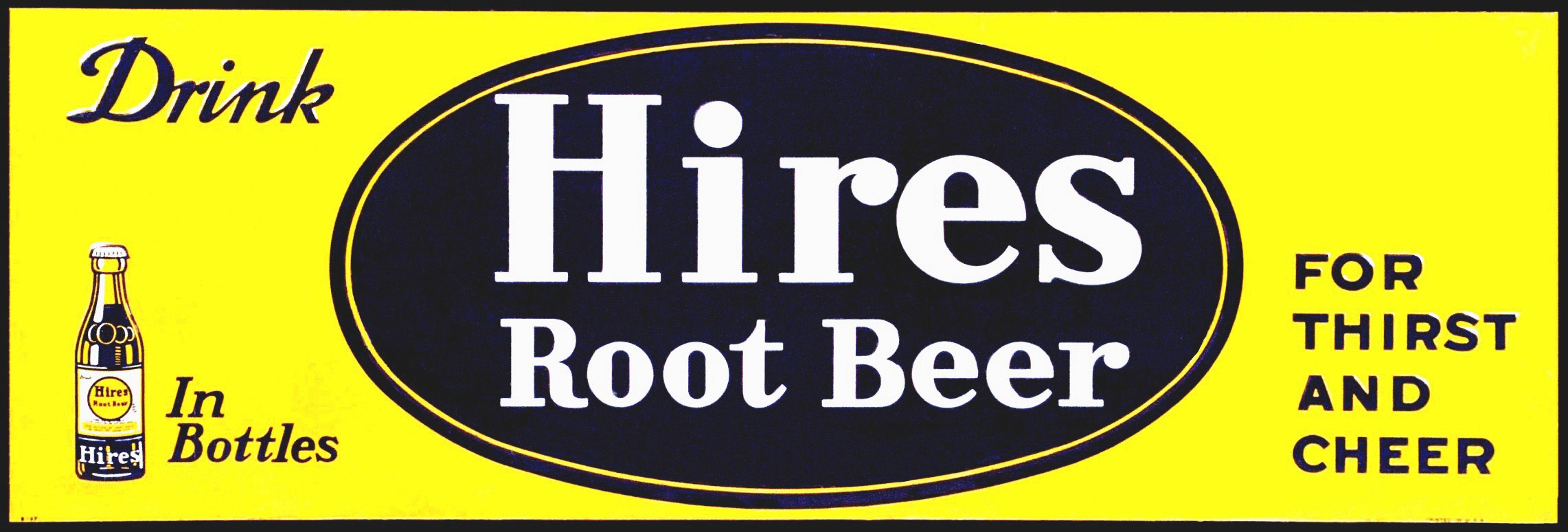
%20Root%20Beer%20For%20Thirst%20And%20Cheer%20-%20embossed%20and%20labeled%20bottles%20-%20banner%20across%20bottom%20-%20tin%20sign%2030%20x%2047.jpg)



%20Root%20Beer%20For%20Thirst%20And%20Cheer%205¢%20-%20Hires%20Multiplex%20Keg%20metal%20sign.jpg)
